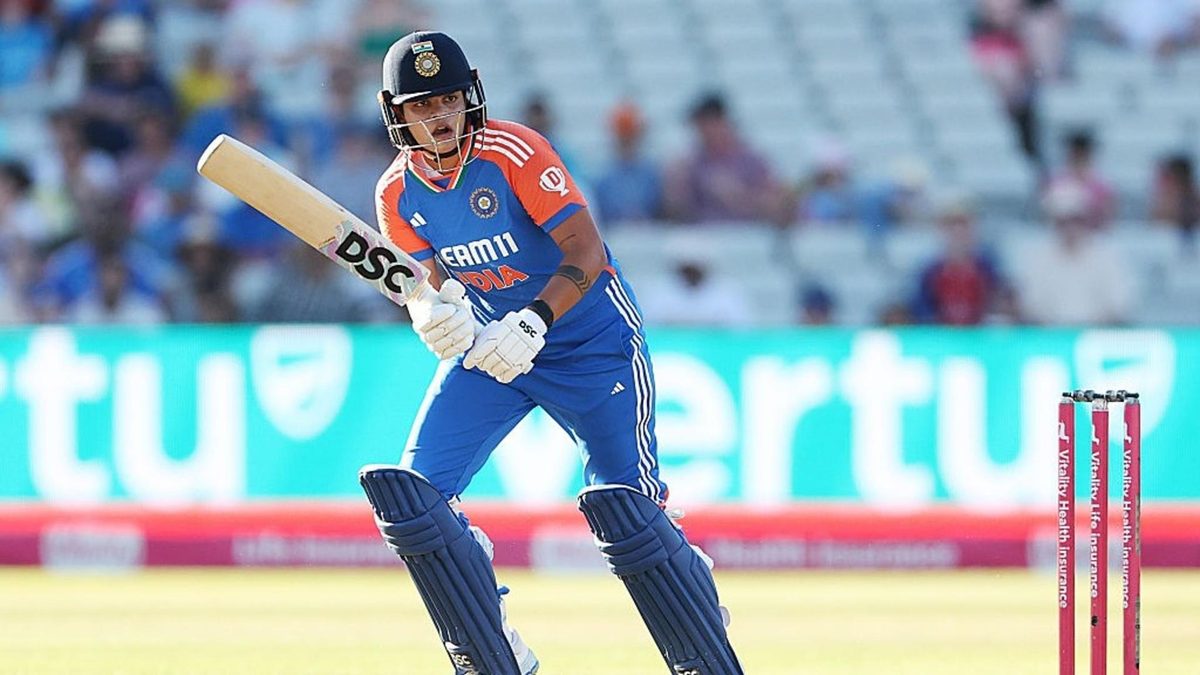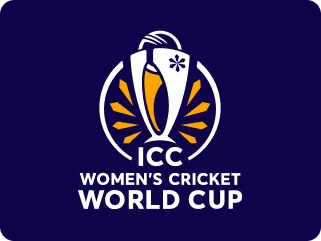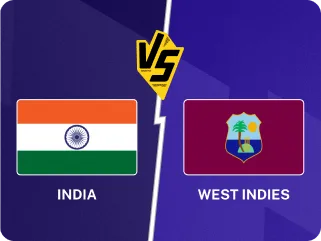
It has been over six months since Shafali Verma last played an ODI for India. She is in danger of missing the World Cup – at India's own loss.
“Regarding Shafali or any other player, [it is] better to ask the right persons.”
Those were India skipper Harmanpreet Kaur's almost evasive words last December, when asked about the absence of Shafali Verma from the white-ball squads to face West Indies at home.
That was the second series in a row for which Verma had been left out – the first was the tour of Australia. She did not make it back for the home Ireland series that followed either.
In March, Verma retained her BCCI central contract, in the Grade B category, perhaps an indication that her dropping was not a long-term measure. But just 15 days after that announcement, she was once again left out of the national team, for the tri-series against South Africa and Sri Lanka which India won. She has not returned for the ODIs against England either (but did play the T20Is).
Ahead of the Ireland series in January, the New Indian Express reported that her fielding had been pinpointed as an area for improvement. That has been a problem area for her ever since she burst onto the international scene, and could have been seen as excusable as long as contributions came from her bat. But with the runs drying up, would she be picked even if she was the best fielder in the country?
How did Shafali Verma perform away from the national team?
Keeping that aside though, Verma's domestic performances in her primary discipline provided cause for hope. During her time away from the national team, she top-scored in two 50-over tournaments – the Senior Women's One Day Trophy in December and the Senior Women's One Day Challenger Trophy in January.
In the former, Verma averaged 75.3 while striking at 152, and handily chipped in with eight wickets. In the latter, she averaged 82.8, striking at 145, and picked up five wickets. Across both tournaments, she piled up nearly 1000 runs in 12 matches (941 to be exact). In March, she turned out twice in the U23 One Day Trophy, and took a hat-trick in one game.
Shafali Verma in domestic 50-over cricket – 2024-25 season
| Competition | Opponent | Batting | Bowling |
| Senior Women's One Day Trophy | Uttar Pradesh | 139 (98) | 0-67 |
| Senior Women's One Day Trophy | Bihar | 8 (9) | 0-5 |
| Senior Women's One Day Trophy | Maharashtra | 50 (41) | 2-31 |
| Senior Women's One Day Trophy | Punjab | 40 (33) | 2-51 |
| Senior Women's One Day Trophy | Saurashtra | 25 (11) | 1-25 |
| Senior Women's One Day Trophy | Vidarbha | 68 (39) | 3-18 |
| Senior Women's One Day Trophy | Bengal | 197 (115) | 0-72 |
| Senior Women's One Day Challenger Trophy | Team B | 91 (71) | - |
| Senior Women's One Day Challenger Trophy | Team E | 95 (65) | 0-44 |
| Senior Women's One Day Challenger Trophy | Team C | 87 (58) | 2-29 |
| Senior Women's One Day Challenger Trophy | Team D | 115 (70) | 3-35 |
| Senior Women's One Day Challenger Trophy | Team C | 26 (21) | 0-48 |
In between all this, she also starred for Delhi Capitals in the WPL, finishing fourth in the run-scoring charts with 304 in 10 matches, at a strike rate in excess of 150. Her 16 sixes were also the second-highest in the competition behind Ash Gardner's 18. On her return to international cricket earlier this month, Verma finished with 176 runs from the five T20Is against England; more runs in the series than anyone, bar Smriti Mandhana.
If the Indian selectors were looking for a reaction after dropping her, her returns were as good as they could have hoped – showing at domestic level her ability to play 50-over cricket, maintain a good standard of performance against higher-quality opposition in the WPL, and then seamlessly return to the international game, albeit in another format.
India's top-order gaps are perfectly suited for Shafali Verma to fill
Heading into the World Cup on home soil in September, the bowling attack remains the choppiest aspect of India's XI, with 31 different players bowling for them in ODIs since the start of 2024 – at least four more than for any other team. The middle to lower order bears a fairly settled look, with Harmanpreet Kaur, Jemimah Rodrigues, Richa Ghosh and Deepti Sharma from No.s 4-7. India have used 10 players in these positions since 2024, roughly on par with the global average.
But in the top three positions, India have tried eight different players – only West Indies (ten), South Africa and England (nine each) have used more. Richa Ghosh, Priya Punia and Yastika Bhatia have played as openers, besides Verma and the current first-choice pair of Smriti Mandhana and Pratika Rawal. Ghosh, Bhatia and Punia have all also played at No.3, as well as Dayalan Hemalatha and the incumbent, Harleen Deol.
For the World Cup, one of those three slots is locked for Mandhana, and another one seemingly for Rawal, who has made a record-breaking start to life as an international cricketer. This opening pair has put on four century stands and five more half-century stands in 13 innings together.
With their current combination though, India have run into a tempo issue with Rawal and Deol both batting in the top three. Since the former made her debut, this is the slowest-scoring partnership for India (min. 100 runs), at just 4.6 runs per over.
In the tri-series in May, Deol in particular struggled to carry on the scoring rate set by the openers, on wickets that were relatively flat and non-threatening. To her credit, the two fifty-plus ODI scores she has batting at No.3 – 115 and 89, both vs Ireland – have come at better than a run-a-ball. But she rarely gets that far in her innings.
Rawal so far has demonstrated a similar, if rather more effective, template to Deol in ODI cricket. She tends to start relatively slow, striking at 77 in the Powerplay and 84 between overs 11 and 20. But when she gets that far – and she has done so regularly – she is able to bat through the innings at a run-a-ball or better.
Phase-wise strike rate in ODI cricket (where data is available)
| Overs | Pratika Rawal | Harleen Deol | Shafali Verma |
| 1-10 | 76.9 | 63.3 | 84.2 |
| 11-20 | 83.8 | 70.2 | 76.5 |
| 21-30 | 90.3 | 64.7 | 100.0 |
| 31-40 | 158.5 | 92.6 | - |
| 41-50 | 184.6 | 119.6 | - |
Verma's replacement might have been her route back to the XI
Essentially, India cannot really afford to have two players of this similar, almost one-gear, style playing the bulk of deliveries. And this is where, somewhat paradoxically, the player who replaced Verma at the top of the order could have paved the way for her return to the side.
Rawal's ODI game has been built around strike rotation – something she tries to do even when the field is up in the first ten overs. This, at least partly, has an effect on Mandhana as well. When opening with Verma, Mandhana has struck at 85.6 runs per 100 balls so far. With Rawal, she has taken up the aggressor's role, going at 104.7.
Rawal might be able to replace Deol and adapt to a role at No.3, where the scoring rate is unlikely to drop even if she comes to the crease outside the Powerplay, since she is not overly dependent on boundaries to keep the scoreboard ticking.
Rawal at three, and Verma back at the top could then have three upsides – India may make better use of the Powerplay thanks to Verma's natural aggression, Mandhana may be able to bat longer by taking fewer risks, and Rawal is likely to be an upgrade on Deol in the middle overs.
This would also reduce the need for Verma to try batting through the innings. If the brief is to maximise the Powerplay with a high-impact innings, that might be a more suitable and/or clear role for her in the lineup.
Shafali Verma must remain in the scheme of things
Reservations over Verma on the basis of her ODI record thus far (644 runs @ 23.0, SR 83.2) are understandable, but India would have lost little by slotting her in during the tri-series, or at least in England, and trying to fine-tune that batting lineup. Her recent domestic run also suggests that she might be getting a better grasp on how to pace her innings in 50-over cricket.
“The constant work is on areas like when deliveries don’t come to my strengths, how do I take singles, how do I rotate strike, how do I build my innings – this last thing is a work in progress throughout. Everyone knows my strengths, but the constant goal is to mentally get smarter by learning how to build an innings better,” she told the Indian Express in January, also adding that she has worked on improving her fitness.
It's also never a bad idea to try capitalising on a player's excellent form, particularly when their talent has never been in doubt. If India do not want to break up the Mandhana-Rawal opening pair, trying Verma at No.3, where she might not have to face the moving ball, could also be a possibility.
One wonders if India might not want to rock the boat too much in the home stretch before the World Cup, but there is, technically, still time for Verma to re-enter the setup. She has been selected in the A squad to tour Australia in August, and a good showing there could see her return to the main team for a series against the same opposition ahead of the World Cup.
There is no guarantee that she would instantly improve things, and what India have lost now is the chance to experiment a bit more. Rather, they must already know beforehand where they want Verma if she is to make a comeback.
It is probably worth a try at the very least. After all, the potential upside is quite high; a top six of Mandhana-Verma-Rawal-Kaur-Rodrigues-Ghosh could be as good as any in the world.
Follow Wisden for all cricket updates, including live scores, match stats, quizzes and more. Stay up to date with the latest cricket news, player updates, team standings, match highlights, video analysis and live match odds.








